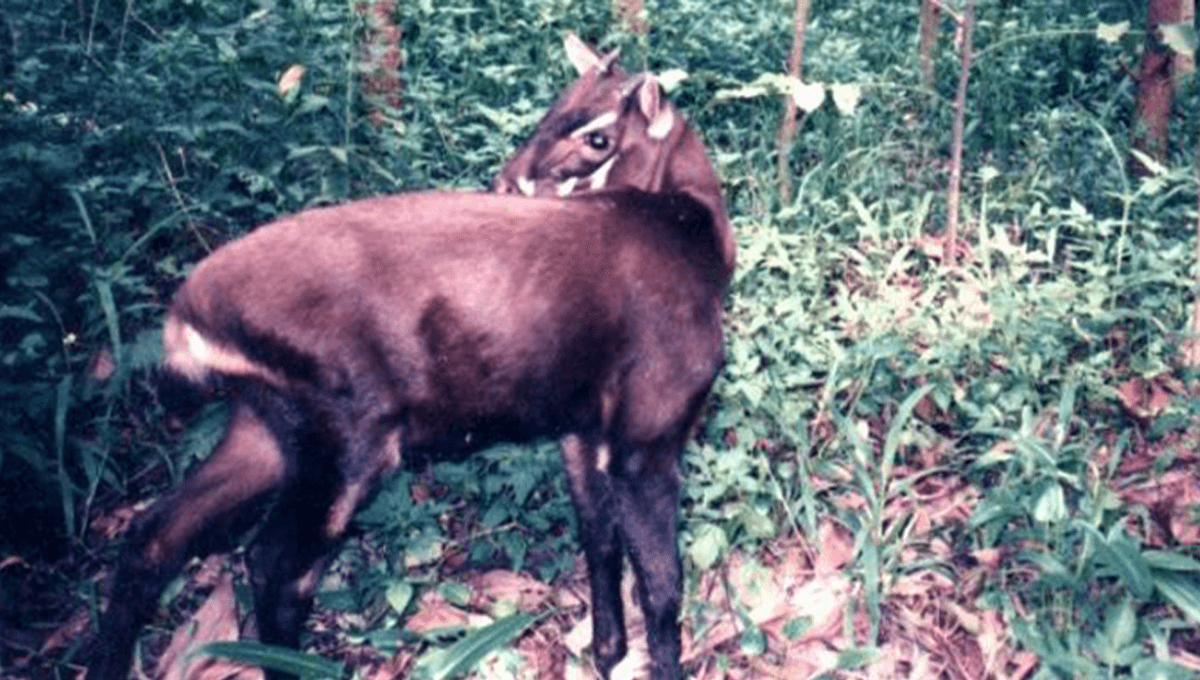
It comes as no surprise that some of the most remote places on Earth are filled with some of Earth’s rarest creatures. From those that have only been seen via camera trap, to cases of discovery and rediscovery, even large creatures can manage to hide away inside secret habitats. None more so than the Saola.
Saolas (Pseudoryx nghetinhensis) are a critically endangered large species that only live in the Annamite Mountains region of Laos and Vietnam. The actual area is thought to be between 5,000 and 15,000 square kilometers (1,931-5,792 square miles), but reports suggest that the species does not occupy much of this space. There are thought to be fewer than 750 animals living here, though there have been no formal surveys.
Due to their elusive nature saolas are often referred to as the Asian unicorn, because of their rarity and the magical quality they hold over the very few people lucky enough to see one. To this day, no wildlife biologist has ever seen a saola in the wild.
The reasons for the lack of surveys and accurate population estimates are as much to do with the geography as anything else. The Annamite Mountain region is a dense, remote forest that is not easy to traverse. In an article in The Revelator, wildlife biologist Lorraine Scotson explains, “I’ve seen grown men reduced to tears in the Annamite Mountains. [Men] who are physically fit and really strong, adventurous types.” She said that there’s a “claustrophobia that gets introduced” in the forested mountains. “Then you’ve got the leeches and the ticks and the horseflies and all of the mosquitoes biting,” she added. “It’s like the whole forest is out to get you.”
The saola, perhaps the world’s most elusive large land mammal, was only discovered in May 1992 when a team found an unusual skull in the home of a hunter and realized it was something new. Since then, reports and sightings of saolas have been somewhat sporadic. In 1999, camera trap footage showed images of the animal, and for brief periods they have been housed in captivity.
New wild photographs of saolas only emerged this side of the millennium, in 2013, as seen on camera traps set by the WWF and the Vietnamese government’s Forest Protection Department.
“When our team first looked at the photos we couldn’t believe our eyes. Saola are the holy grail for South-east Asian conservationists so there was a lot of excitement,” said Dr Van Ngoc Thinh, WWF-Vietnam’s Country Director, in a statement on the WWF website in 2013. “This is a breath-taking discovery and renews hope for the recovery of the species.”
Saolas have two parallel horns that can reach 50 centimeters (20 inches) and measure around 84 centimeters (33 inches) at the shoulder. They are often described as a cousin to cattle but resemble an antelope in appearance. They can weigh 90 kilograms (200 pounds) and have striking white facial markings and brown bodies. They are likely never to have occurred in particularly high numbers but have been caught in wire snares meant for other creatures of the forest for the illegal wildlife trade. “There is no site in the saola’s range where we believe the species is yet safe from poaching,” William Robichaud told the Guardian in 2017.
The IUCN writes, “The intensity of hunting in the Saola’s range is hard to adequately describe, but some figures hint at the enormity of the problem. The human population of Vietnam is more than 90 million, that of China more than a billion. Together, they comprise an enormous market for wildlife products.”
Despite the threats against them and the lack of information, the team at the Saola Working Group, a part of the IUCN, have an ambitious plan to one day start a captive breeding population. A new piece of equipment to test animal dung found in the forest, revealing quickly if the poop belongs to the saola or another forest inhabitant, speeds up this process. While the plan is risky, the team believe it’s the best course of action to protect the remaining saolas from extinction.
Source Link: Meet The Critically Endangered Saola: Secretive And Shy, But Still Out There?